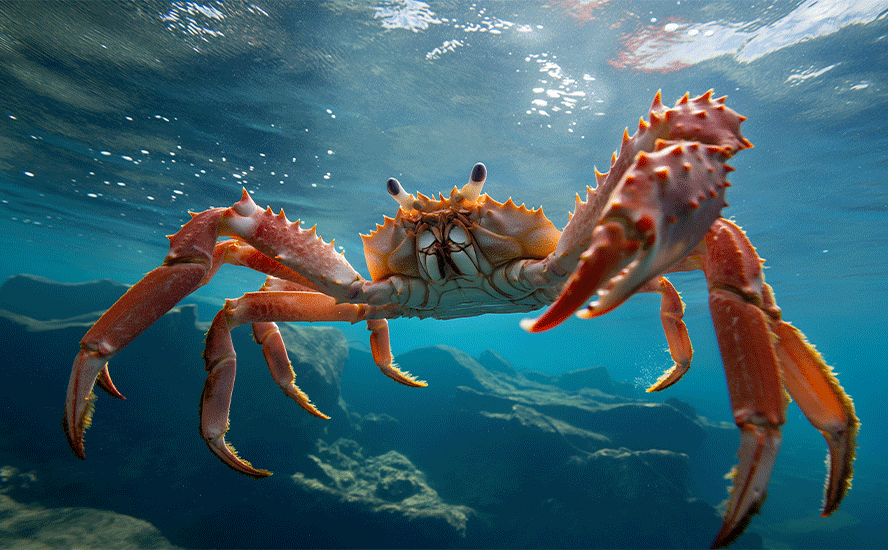The King Crab Kings
By Andrew S. Lewis – Bloomberg
Its claws were exceptionally muscular, its six legs studded with spikes, its mouth wreathed with tiny “jaw legs” reminiscent of the Predator. Scores more, some pushing 25 pounds and with leg spans beyond 5 feet, started appearing in other people’s nets. The community quickly learned that the crabs’ powerful limbs could wreak havoc on fishing gear—tangling or tearing nets, stealing bait from longlines—and that the creatures could devour most any small marine life in their path. They seemed to be vacuuming the sea clean of the food sources many whitefish species need to survive, including bivalves, sea stars, even larvae.
“We hated them,” Ingilæ says. He called Norway’s Institute of Marine Research (IMR), which identified the interloper as Paralithodes camtschaticus, the Kamchatka red king crab. It was an invasive species from Alaska, one that Soviet researchers had brought to Russia’s side of the Barents Sea decades earlier. It also happened to be a delicacy, worth billions of dollars a year.
Legal Notice / Disclaimer
Ahead of the Herd newsletter, aheadoftheherd.com, hereafter known as AOTH.Please read the entire Disclaimer carefully before you use this website or read the newsletter. If you do not agree to all the AOTH/Richard Mills Disclaimer, do not access/read this website/newsletter/article, or any of its pages. By reading/using this AOTH/Richard Mills website/newsletter/article, and whether you actually read this Disclaimer, you are deemed to have accepted it.


























